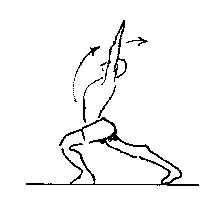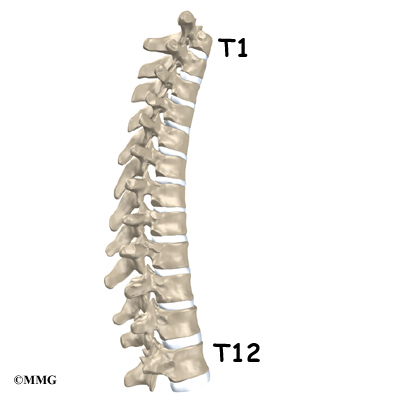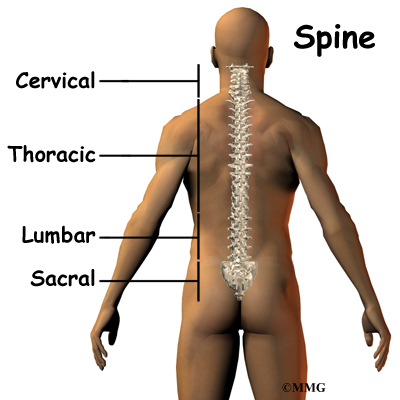
So sit bolt up in that straight back chair and get ready for some difficult listening
- Laurie Anderson, Home of the Brave
Many of us have been told to "sit up straight" for the sake of our backs - and perhaps as children - to encourage proper bone growth.
Many of us have seen little wheelie chairs that induce a kind of kneeling that are supposed to be good for posture. Or have thought sitting on therapy balls a good way to encourage muscle action to support those low back vertebrae (they're not. i've gotten rid of mine).
When we think of our posture, we may just thrust our shoulders back and stick our chest out as if on military parade or preparing for a battement in ballet. We're not necessarily either helping ourselves or getting into "good" posture with any of these approaches.


First off, sitting, according to Back Guru PhD Stuart McGill of Canada (yeh!) sux. It places the worst forces on our spines of just about anything (see the article on working out standing or prone but not sitting for more). So sitting is a doomed thing that we should do as little of as possible.
Second, most of the devices like the kneeler, and sit up straight advice, is wrong or let's say leads to poor or sub-optimal practice. Let's take "sit up straight" Our usual response to this invocation is the above described salute situation where we move our backs
 into what's called "extension" - We can really get a sense of extension when we lean way back and we curve our spines inward. The opposite of extension, and usually what we get chided for, is slumping forward - having our spines in flexion, the opposite of extension.
into what's called "extension" - We can really get a sense of extension when we lean way back and we curve our spines inward. The opposite of extension, and usually what we get chided for, is slumping forward - having our spines in flexion, the opposite of extension.
Neither extreme is particularly better than the other; neither is a great idea. There is a better way that is less fatiguing, sends better information through our nervous systems, and actually can help energize us. It's called a "neutral spine" - where the spine is neither extended or flexed.

You know all your adjustments on an office chair? This is the posture - the neutral spine - we want to get a chair to support.
But first we need to know how to feel our neutral spine posture. There's some good tips over on "energize with proper posture" called a posture check. The idea, illustrated to the side, is to slump forward (flexion) than pull shoulders way back (extension) then come forward to feeling that place in between the two, neutral. As you think about this posture from time to time, you may find that you're in more extension or more flexion than you are in neutral. That's ok. Just check yourself and head back to neutral. See if you can't set up your chair to support that neutral-ness.
That said, remember sitting sux. It's good to keep your spine (and all of you) moving, so stand up, walk around. And while sitting, doing that slump forward/extend back is actually not a bad pattern for the spine to practice. If you did this forward/back move while standing up, you could complement it with moving the spine side to side, putting at least the low back through more of a range of motion - and that's just the area these posture moves tend to get the most - the low (lumbar) back (rather than the mid back, thoracic, and neck, cervical).


So another great mobility drill we can do while seated is from zhealth, and it's called a "thoracic glide" - it's something to practice because most of us aren't used to thinking about moving this part of our backs.
Our thoracic spines are the vertebrae that run from the bottom of our neck down to about the middle of our backs (bottom of our ribs there abouts). They have a limited range of motion - meaning they can't slump or extend a ton, but they still can move. It's just we don't tend to move them, and a lot of us get really tense or sore in our shoulders.
So the idea of a thoracic glide when seated or standing in neutral is *just* to move that part of the spine back into flexion and up into extension. If we put our hand in the middle of our rib cage, around the sternum, and imagine pressing in while we breath out, that can get the thoracic spine to flex. likewise if we breath in so our chest really rises, like we're sucking our backs into our rib cage, that can get the thoracic to extend. THe important thing is not to make this a shoulder move - they stay relaxed. By flexing and extending that chunk of spine regularly, we can help the spine stay mobile, energized and functioning. And let me say it again - this glide can take practice. So even if it feels like nothing it moving, keep trying and it WILL loosen up. Repetitions are really important.
From time to time moving the head *not* rolling it (bad bad) but just laying the ear towards the shoulder one side at a time, or turning it left side, middle, right side, with that spine in neutral, is also another great thing to do while reading this post. If you can remember to do these neutral spine checks, thoracic glides and occaisional head titls and turns, guaranteed you'll feel a lot better.
So do sit straight up or slump or extend - movement is good and we adapt to it quickly. Better yet though, now that you've read this, take a break to get up, do some spine moves, check your chair, shake your shoulders and enjoy how good neutral feels.
oh ya, ps sitting on those balls is for rehab and need to stay there- i used to think they were great for stabilizing the spine by imbalance triggering muscle activation. Alas. Wrong. Check stuart mcgill ultimate back fitness and eric cressey's new book on the topic for more.







